Species
Conservation programs funded by the National Fish and Wildlife Foundation benefit hundreds of species and the habitats they depend on across the United States. NFWF has developed conservation strategies with measurable outcomes that track progress for many of these species. These species are good indicators of healthy habitats.
These strategies and metrics can be found in NFWF’s business plans developed by scientists and other experts, and approved by the Foundation's Board of Directors. NFWF programs fund conservation grants that implement the strategies and actions identified in the business plan.
Click on the species to learn a little about it, and which programs fund grants to conserve the species and its habitat.

Bridled darter
The bridled darter is a small, freshwater fish discovered in 2007 that has a limited distribution within the headwaters of the Coosa River in northern Georgia and southern Tennessee. This species is threatened by runoff caused by agriculture and forestry activities as it is very sensitive to water pollutants.

Pollinators
Pollinators are a group of insect, avian and mammalian species that fertilize many flowering plants and agricultural crops by transferring pollen from the male structures (anthers) to the female structures (stigma) during foraging. More than 80 percent of flowering plants on earth need pollinators to produce the next generation, and it is estimated that they add hundreds of billions of dollars to the global economy, highlighting their extreme importance to human food security.

Central California Coast coho salmon
The central California coast coho salmon is an evolutionarily significant unit of coho salmon that are found from central California near Punta Gorda to the northern border of California. They are an endangered species that rely on proper timing of streamflows in rivers to allow individuals to spawn and increase juvenile survival.

Louisiana black bear
One of 16 subspecies of the American black bear, the Louisiana black bear was listed as threatened in 1992 under the Endangered Species Act, citing habitat loss and fragmentation as primary threats to their populations. Significant improvements in population size and habitat achieved through habitat protections, concerted reforestation efforts, and translocations resulted in the Louisiana black bear’s removal from the Endangered Species List in 2016.

Elkhorn coral
Elkhorn coral are one of the most important reef building corals found in the Caribbean, where individual colonies can grow more than 6 feet in height and 12 feet in diameter. Elkhorn coral were listed as threatened following a severe disease outbreak that caused widespread mortality, decimating the population to less than 3 percent of its former abundance. Warming ocean temperatures are a further stress on these corals.

American horseshoe crab
The American horseshoe crab plays an integral ecological role, particularly in the Delaware Bay where hundreds of thousands of shorebirds rely on horseshoe crab eggs to build energy reserves for their northward migration. Contrary to their name, horseshoe crabs are in fact not crabs at all. They are arthropods, making them more closely related to spiders and scorpions.
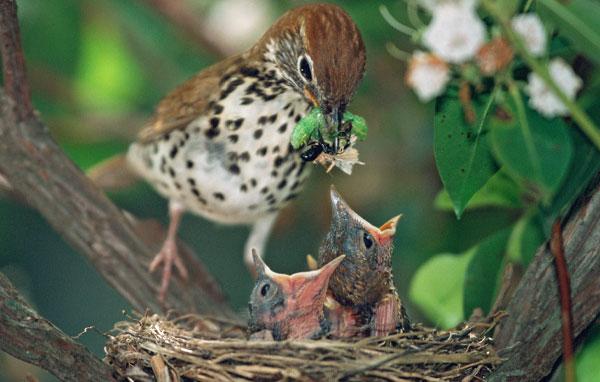
Wood thrush
A well-known inhabitant of eastern deciduous forests, the wood thrush is known for it's flute-like song during the mating season. Wood thrush are excellent indicators of moist mature forests with structurally complex mid and understories. Habitat loss and degraded habitat quality on both breeding and wintering grounds have resulted in population declines since at least 1970.
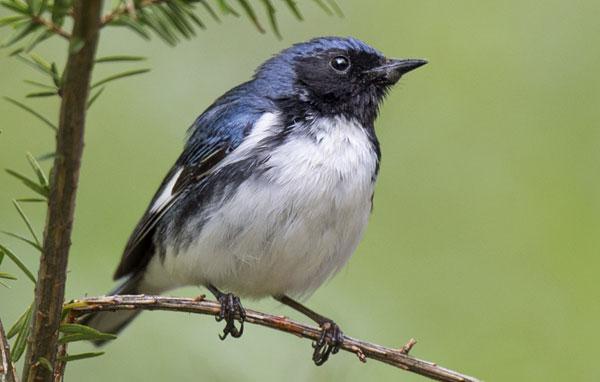
Black-throated blue warbler
Black-throated blue warblers are neotropical migrant that nests in the rich deciduous and mixed coniferous forests of eastern North America. Breeding male and females are sexually dimorphic, meaning they have vastly different appearances—so much so that they were originally described as two separate species. While males have a black face and throat with a blue head and back, females are a plain grayish olive color.

Canada lynx
The threatened Canada Lynx is a medium-sized carnivore that inhabits boreal forests where their massive paws make them adapted to traveling through deep snow. These solitary hunters rely on contiguous, structurally diverse forest habitat that support abundant populations of their favorite prey, the snowshoe hare.

Southwest willow flycatcher
The southwestern willow flycatcher, a subspecies of the broadly distributed willow flycatcher, is a small songbird that is currently listed as "Endangered" under the Endangered Species Act and breeds in densely vegetated riparian buffers throughout the southwest. The loss of these native riparian habitats along with water diversion for agriculture, invasive vegetation and brood parasitism by brown-headed cowbirds have caused major declines in abundance for this subspecies.

North Atlantic right whale
North Atlantic right whales are one of the most endangered large whales in the world, with fewer than 100 breeding females in the entire population. Living up to 70 years, these large baleen whales migrate from New England to the shallow coastal waters of South Carolina, Georgia, and northern Florida, which serve as important feeding and calving areas.

Monarch butterfly
One of North America's most iconic species, the monarch butterfly is best known for it's spectacular 3,000-mile annual migration from their northern breeding grounds to wintering grounds in central Mexico. A distinct, western monarch population migrates between the western states and their winter range in coastal California; both the eastern and western populations have been negatively affected by habitat loss and reduction in milkweed plants that serve as the sole food source for monarch caterpillars.
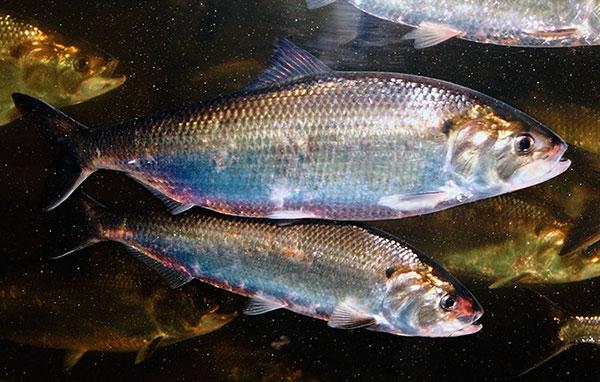
American shad
The American shad is an anadromous fish that can be found in rivers and coastal waters along the entire Atlantic coast. Once supporting a large commercial fishery, shad have declined in abundance following decades of overfishing and the construction of dams along migration routes, which reduces access to spawning habitat.

Long-billed curlew
Long-billed curlew are a charismatic member of the Northern Great Plains bird fauna. The species is North America's largest shorebird and are of conservation concern due to long-term declines and pervasive threats across both nesting and wintering locations. Long-billed curlews use their very long decurved bill to probe for crabs, shrimp and mollusks in the coastal marshes and mudflats of California and Mexico during their non-breeding period, and to pick up grasshoppers and other terrestrial insects as they trundle along through the prairie.
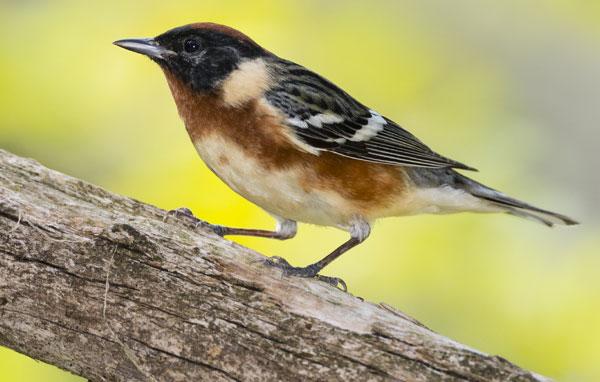
Bay-breasted warbler
Bay-breasted warblers nest in spruce and fir forests across Canada, and can be found in Maine, New Hampshire, Vermont and the Adirondack Park of New York. While they occupy similar habitats as Cape May and blackpoll warblers, bay-breasted warblers in particular forage at the inner mid-level, and nest in the lower third-level, of trees.

Grizzly bear
Grizzly bears are the North American subspecies of brown bears which roam throughout Canada and northwestern America. Grizzlies are omnivores, feeding on insects and deer alike. Come winter they descend into a deep sleep called torpor where they do not eat or drink until they emerge in the spring.
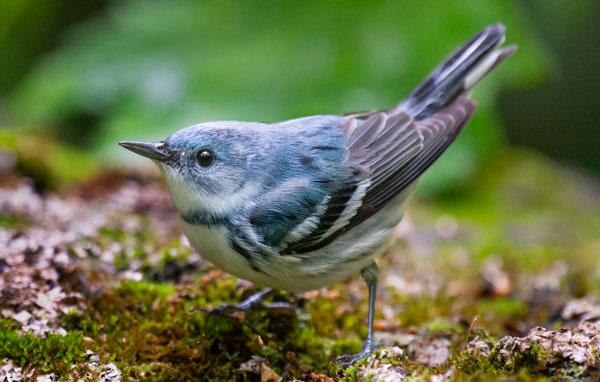
Cerulean warbler
The cerulean warbler is a small, migrant songbird named for the male's sky-blue plumage. It is dependent on contiguous tracts of mature, deciduous forest habitat throughout its breeding range in the eastern United States, and is particularly sensitive to the negative effects of forest fragmentation which has contributed to widespread population declines.
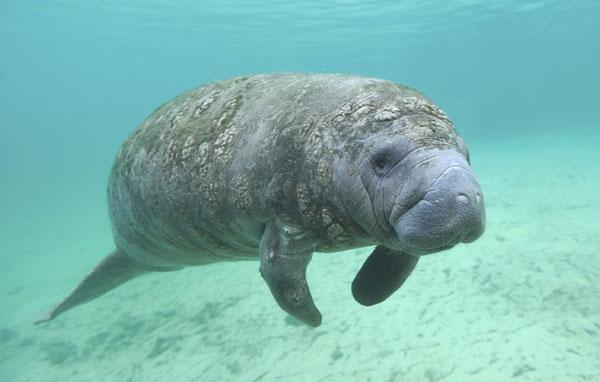
West Indian manatee
West Indian manatee have earned their nickname of “sea cows,” consuming about 32 pounds of aquatic plants each day and weighing more than 3,000 pounds. Found throughout the Caribbean, manatees are common in Florida where the populations have increased significantly in recent years, resulting in the species being downlisted from endangered to threatened in 2017.

Cape May warbler
Cape May warblers are a spruce-fir boreal forest-nesting neotropical migrant that spends the breeding seasion in northern North America and non-breeding period in the Caribbean. They are often seen as a flash of brilliant yellow and rust as they forage actively in the tops of trees where they are dependent on spruce budworm caterpillars.
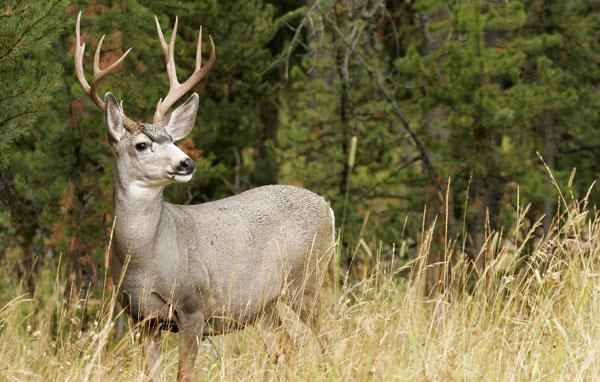
Mule deer
Mule deer are a social, migratory ungulate who are named for their large ears that resemble a mule's ears. An iconic species of the western United States, habitat loss and increased fragmentation of the landscape have caused localized declines in mule deer populations and reduced the function of critical migration paths.

Golden eagle
The golden eagle is a Holarctic species that inhabits open country, in either deserts, tundra, high altitudes or rangelands. Although it is widely distributed in the continental United States, its numbers are generally much greater in western states.

Chinook salmon
Chinook salmon are anadromous—they hatch in freshwater, migrate to the sea, then return to freshwater to breed. Sometimes called “King Salmon,” they are the largest of the Pacific Salmon. They range from the Monterey Bay area of California to the Chukchi Sea of Alaska.

Villosa mussels (Coosa creekshell)
The Coosa creekshell is a species of freshwater mussel that are endemic to the Coosa River Drainage in Alabama, Georgia and Tennessee. Increased sedimentation and reduced aquatic connectivity for host fishes like sunfish and sculpins have caused population declines throughout their range.
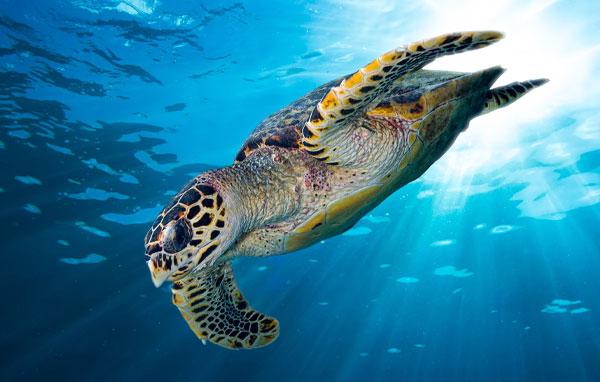
Sea turtles
There are seven different species of sea turtles, six of which are found in U.S. waters and are listed as threatened or endangered in a least a portion of their circumglobal range. These species include leatherback, loggerhead, Kemp’s ridley, olive ridley, green and hawksbill. For more than 100 million years, sea turtles have migrated long-distances over temperate and tropical oceans, spending most of their time at sea but returning to natal beaches to lay eggs.